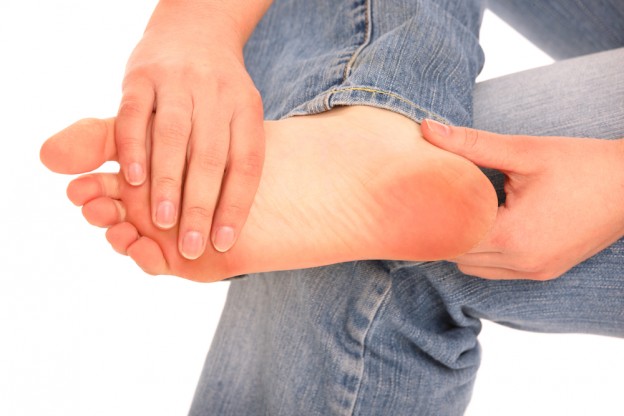Stem Cells Offer Hope for Diabetic Foot Ulcer Treatment
 By: Dr. Felix Sigal
By: Dr. Felix Sigal  Tags: diabetic foot ulcer Foot Ulcer foot ulcer treatment
Tags: diabetic foot ulcer Foot Ulcer foot ulcer treatment Diabetic foot ulcers are a serious complication of both type 1 and type 2 diabetes, and each year in the U.S., about 80,000 patients will undergo lower limb amputations as a result of these slow-to-heal sores. Now a new study from researchers at Tufts University and Harvard University in Boston suggests a potential new approach to treating foot ulcers in diabetic patients using small samples of cells from the patients themselves.
From Stem Cells to Autologous Grafts
The aim of the study was to learn if samples removed from the foot ulcers of diabetic patients could be “reprogrammed” as induced pluripotent stem cells (iPSCs), cells that are “forced” to resume the “clean slate” of an embryonic stem-cell-like state. The reprogramming is induced by exposing the extracted cells to certain kinds of viruses in a lab. These viruses cause the cells to reprogram themselves at the genetic level, essentially wiping clean their “memories” and functions so they can be reprogrammed into tissue that can be used in autologous grafts to help promote new tissue generation and healing. Autologous grafts (grafts taken from the patient) are typically associated with a much higher rate of success than grafts harvested from a donor because autologous grafts are better tolerated, and therefore associated with a very low risk of rejection that can complicate healing.
In this study the researchers used the Sendai virus to reprogram the cells. The Sendai virus is a type of flu virus that affects rodents. By exposing the ulcer tissue cells to the virus, the cells’ DNA – the material responsible for “telling” the cell how to behave – is altered, causing the cell to revert to an embryonic stem-cell-like state so it can be reprogrammed into healthy tissue cells. For their research, the study authors confirmed the cell transformation using special lab testing methods and by comparing the cells from the diabetic foot ulcer patients to “transformed” cells from diabetic patients without foot ulcers and from healthy patients.
Healing Potential
Pluripotent stem cells have the ability to develop into many types of tissue, and in recent years, significant attention has been paid to their use in disease treatment and tissue repair. Once injected into the site of tissue damage, these cells can develop into new, healthy tissue when exposed to the appropriate stimuli, resulting in faster and more complete healing.
The researchers noted the findings of this study could provide the basis for new therapies for diabetic foot ulcers, including grafts and injections directly into the ulcer for improved wound healing and tissue repair. In addition, the authors noted the study results could pave the way for additional iPSC studies using cells from other areas of the body to treat diabetic complications other than foot ulcers.
Advanced Foot Ulcer Therapy
The Foot and Ankle Clinic is an active participant in clinical trials aimed at healing hard-to-treat diabetic foot ulcers to avoid serious complications and improve patients’ overall quality of life. As a lead and contributing researcher, Dr. Felix Sigal has extensive experience in helping patients learn about the most appropriate treatment options optimized for their needs. To learn more about the clinic or to find out about ongoing clinical trials, visit the Foot & Ankle Clinic website or call our office at (213) 365-0793.




